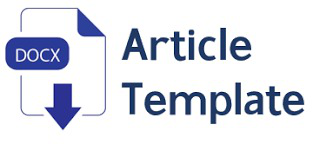Submissions
Author Guidelines
To ensure a smooth submission and review process, please adhere to the following guidelines:
Manuscript Preparation:
Manuscripts should be submitted in Word format (doc/RTF), using a standard font as on manuscript template i.e. garamound (12-point font size). Please include a title page with the title of the article, author(s) name(s), affiliation(s), email address(es), and any acknowledgments or funding information. Use footnotes rather than endnotes. Footnotes should conform to the Chicago Manual of Style 17th edition (full note).
- The manuscript should discuss the specific issue of Law and/or legal cases either theoretical study or empirical study according to the Focus and Scope.
- The submitted manuscript is an original work that has not been published in any form.
- The manuscript also is not in the publication process in another journal/book or any kind of media.
- The manuscripts should present bibliographies that entail primary sources—books, manuscripts, interviews, or observation—and updated secondary sources from books or peer-reviewed journals.
- The manuscripts should contain an argument/thesis/finding which contributes to a scholarly discussion in a field of study which should clearly be mentioned and systematically presented in the abstract, content, and conclusion.
- It is written in English following the standard of the scientific paper.
Article Structure:
Articles should typically include an abstract of no more than 250 words. The length of the manuscript is between 5.000 to 10.000 words written in accordance with Supremasi’s template. The main text should be organized into clear and concise sections, including an introduction, literature review, methodology (if applicable), findings, discussion, and conclusion. Headings and subheadings should be used to enhance readability.
Citation Style:
Supremasi Hukum follows the Chicago Manual of Style 17th edition (full note) for citation style. Please ensure that all citations are accurate and formatted correctly. Footnotes should be used for citations and should provide sufficient detail to allow readers to easily locate the cited source.
Formatting Guidelines:
Tables and figures should be placed within the text at the appropriate points and numbered sequentially. Each table and figure should have a descriptive title. All tables, figures, and images should be of high quality and suitable for reproduction.
Copyright and Permissions:
Authors are responsible for obtaining permission to reproduce any copyrighted material (including images, tables, or lengthy quotations) that is not their own. Upon acceptance for publication, authors will be required to sign a copyright transfer agreement.
Submission Process:
Manuscripts should be submitted electronically through Supremasi online submission system. Authors should ensure that their submissions comply with all formatting and style guidelines outlined above.
Review Process:
Submitted manuscripts will undergo a double-blind peer review process. Authors will be notified of the outcome of the review process in a timely manner.
Ethical Guidelines:
Authors should ensure that their work is original and has not been previously published, nor is it currently under consideration for publication elsewhere. Any conflicts of interest should be disclosed in the manuscript. All ethics should comply with Supremasi publication ethics.
Contact Information:
For any inquiries regarding the submission process or manuscript preparation, please contact the editorial office at supremasi.uinsuka@gmail.com or jsh.fsh@uin-suka.ac.id








